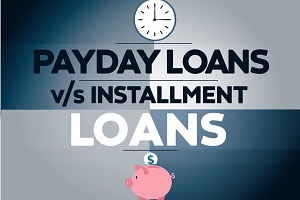Understanding Payday Loans
Payday loans, often marketed as short-term financial solutions, have been a go-to for millions of Americans facing urgent cash needs.
These loans are typically small, unsecured amounts designed to be repaid by the borrower’s next paycheck. While they promise quick relief, payday loans often come with exorbitant interest rates and fees, trapping many borrowers in cycles of debt.
As awareness grows about the dangers of payday loans, alternatives have emerged that offer more sustainable financial solutions.
In this article, we explore the top alternatives to payday loans in 2025, analyzing their advantages, disadvantages, application processes, and suitability for different needs.
1. Credit Union Payday Alternative Loans (PALs)
Overview
Credit unions offer Payday Alternative Loans (PALs), designed to provide affordable short-term financial assistance.
These loans typically range between $200 and $2,000, depending on the credit union, and come with reasonable interest rates capped at 28% by federal regulation.
Advantages
- Lower Interest Rates : Unlike payday loans that can charge annual percentage rates (APRs) exceeding 400%, PALs offer much more manageable rates.
- No Predatory Practices : Credit unions prioritize the financial well-being of their members.
- Building Credit : Timely repayment of PALs can help improve your credit score.
- Flexible Terms : Loan repayment periods often range from one to six months.
Disadvantages
- Membership Requirement : You must be a member of the credit union, which may involve some fees or requirements.
- Limited Availability : Not all credit unions offer PALs.
- Lower Loan Limits : The amounts available may not suffice for significant emergencies.
How to Apply
- Join a Credit Union : Start by becoming a member of a credit union offering PALs. Membership may require living in a specific area or working for certain employers.
- Meet Requirements : Most credit unions require members to have been active for at least 30 days before applying for a PAL.
- Apply Online or In-Person : Provide necessary documents like proof of income and identification.
- Approval and Disbursement : Many credit unions disburse funds within 1-2 business days.
2. Online Lenders Offering Small Personal Loans
Overview
Several online lenders specialize in providing small, short-term personal loans.
These loans usually range from $500 to $5,000, with repayment periods of three months to three years.
Companies like Upstart, SoFi, and LendingClub have gained popularity for their transparent terms and rapid processing.
Advantages
- Fast Processing : Online platforms often approve and disburse loans within 24-48 hours.
- No Physical Visits Required : The entire application process can be completed from the comfort of your home.
- Flexible Loan Amounts : Borrowers can choose amounts that align with their needs.
- Transparent Terms : Many platforms provide detailed breakdowns of fees and interest rates before finalizing the loan.
Disadvantages
- Higher Credit Score Requirements : Many online lenders require a fair to good credit score (around 600 or above).
- Interest Rates Can Vary : Depending on your creditworthiness, interest rates may still be higher than traditional loans.
- Origination Fees : Some lenders charge upfront fees, which can reduce the net loan amount.
How to Apply
- Research Lenders : Compare options to find a lender offering favorable terms.
- Prepare Documents : Gather proof of income, identification, and bank account details.
- Complete the Application : Provide personal and financial information online.
- Receive Funds : Upon approval, funds are typically transferred directly to your bank account.
3. Employer-Based Financial Assistance Programs
Overview
Many employers now offer financial assistance programs to support their employees’ financial well-being.
These programs may include advances on salaries, emergency loans, or partnerships with financial institutions for low-interest loans.
Advantages
- No Credit Check : Since these programs are employer-based, they often bypass traditional credit checks.
- Convenient Repayment : Payments are typically deducted directly from your paycheck.
- Supportive Policies : Employers aim to foster employee well-being, ensuring fair terms.
Disadvantages
- Limited Amounts : Assistance may be capped at a portion of your salary.
- Employer Awareness : You may need to disclose financial difficulties to your employer, which some might find uncomfortable.
- Eligibility Requirements : Not all employers offer these programs.
How to Apply
- Inquire with HR : Check with your Human Resources department about available financial assistance options.
- Submit a Request : Fill out necessary forms detailing your financial need.
- Receive Approval : Once approved, the funds are either advanced directly or facilitated through a partner institution.
4. Nonprofit and Community-Based Lending Programs
Overview
Nonprofit organizations and community groups often provide small-dollar loans or grants to individuals in need.
Programs like Mission Asset Fund and Lending Circles use innovative peer-lending models to offer affordable financial assistance.
Advantages
- Low or No Interest : Many nonprofit programs charge no interest or nominal fees.
- Community Support : These programs often include financial literacy education.
- Inclusivity : Borrowers with low or no credit scores are often eligible.
Disadvantages
- Limited Funding : Programs may have small budgets, limiting the number of people they can help.
- Application Process : Some programs require participation in workshops or financial training.
- Geographic Restrictions : Availability may be limited to certain areas.
How to Apply
- Locate Programs : Search online or ask local community centers about nonprofit lending options.
- Submit an Application : Provide proof of need and other required documents.
- Attend Training (if required) : Some programs require participation in financial education sessions.
- Receive Funds : Funds are typically disbursed within a few weeks.
5. Borrowing from Family or Friends
Overview
When in a financial bind, turning to family or friends can be a straightforward and interest-free alternative to payday loans.
Advantages
- No Interest or Fees : Borrowing from loved ones often comes without financial penalties.
- Flexible Terms : Repayment schedules can be customized to suit both parties.
- Immediate Availability : In many cases, funds can be provided instantly.
Disadvantages
- Strained Relationships : Failure to repay can damage personal relationships.
- Lack of Formality : Without a written agreement, misunderstandings may arise.
- Limited Amounts : Borrowing capacity depends on the financial situation of the lender.
How to Approach
- Be Transparent : Explain your financial need and repayment plan clearly.
- Draft an Agreement : Create a simple written document outlining loan terms.
- Maintain Communication : Keep your lender informed about your repayment progress.
Payday loans, while easily accessible, often lead to financial difficulties due to their high costs. Fortunately, in 2025, borrowers have access to a variety of safer, more affordable alternatives.
Whether you choose a credit union PAL, an online personal loan, employer-based assistance, nonprofit lending, or borrowing from loved ones, each option comes with unique benefits and considerations.
By understanding these alternatives, Americans can make informed financial decisions that promote long-term stability.



